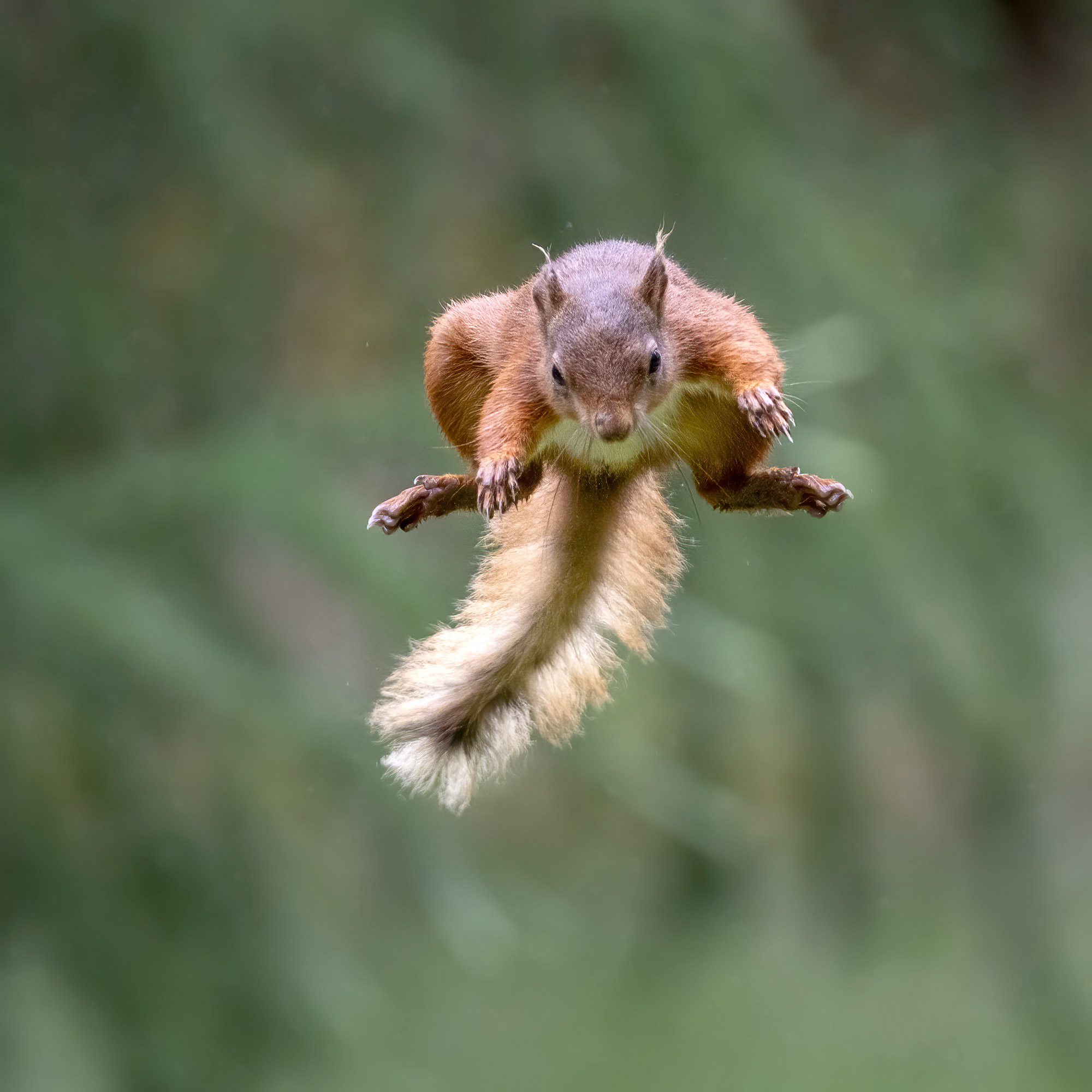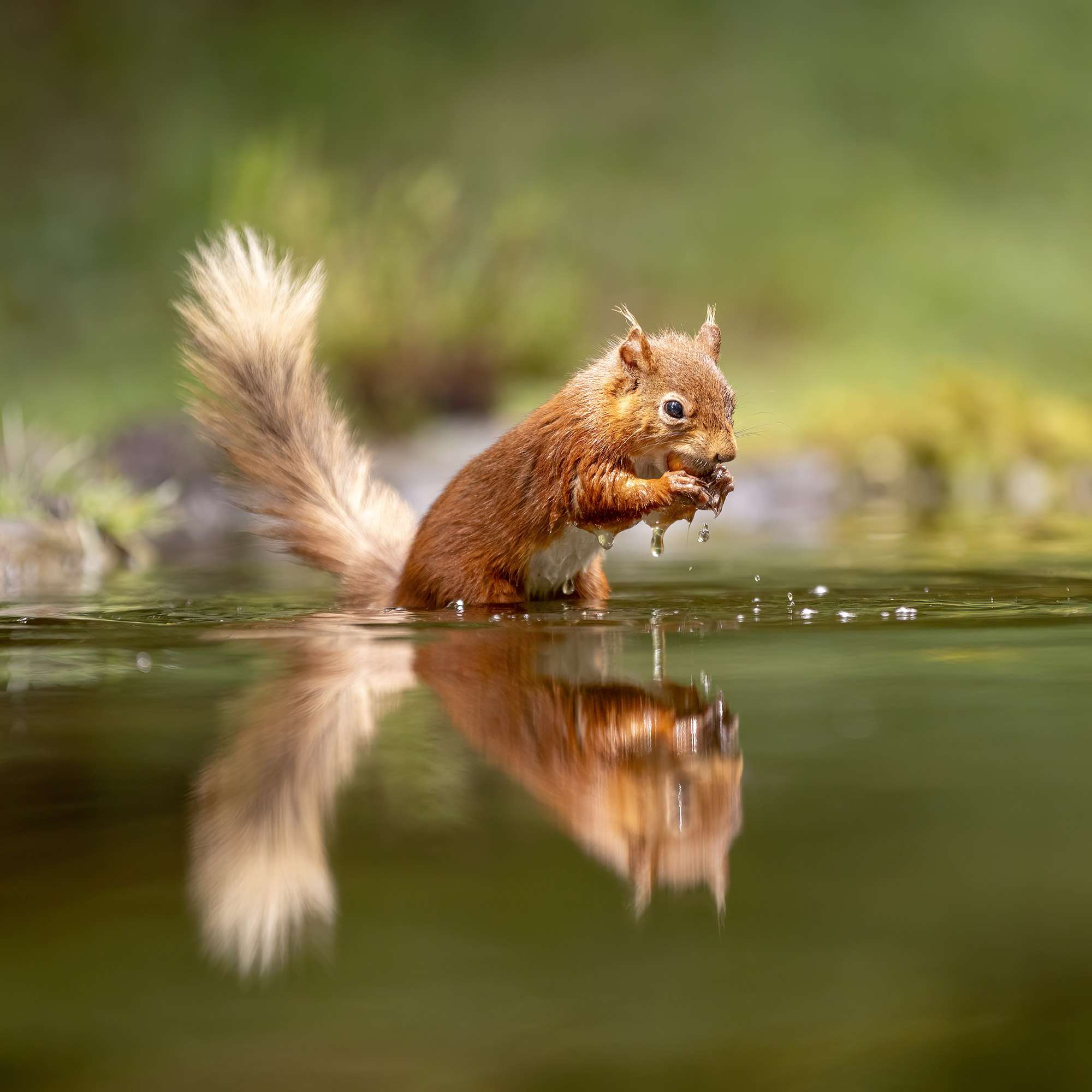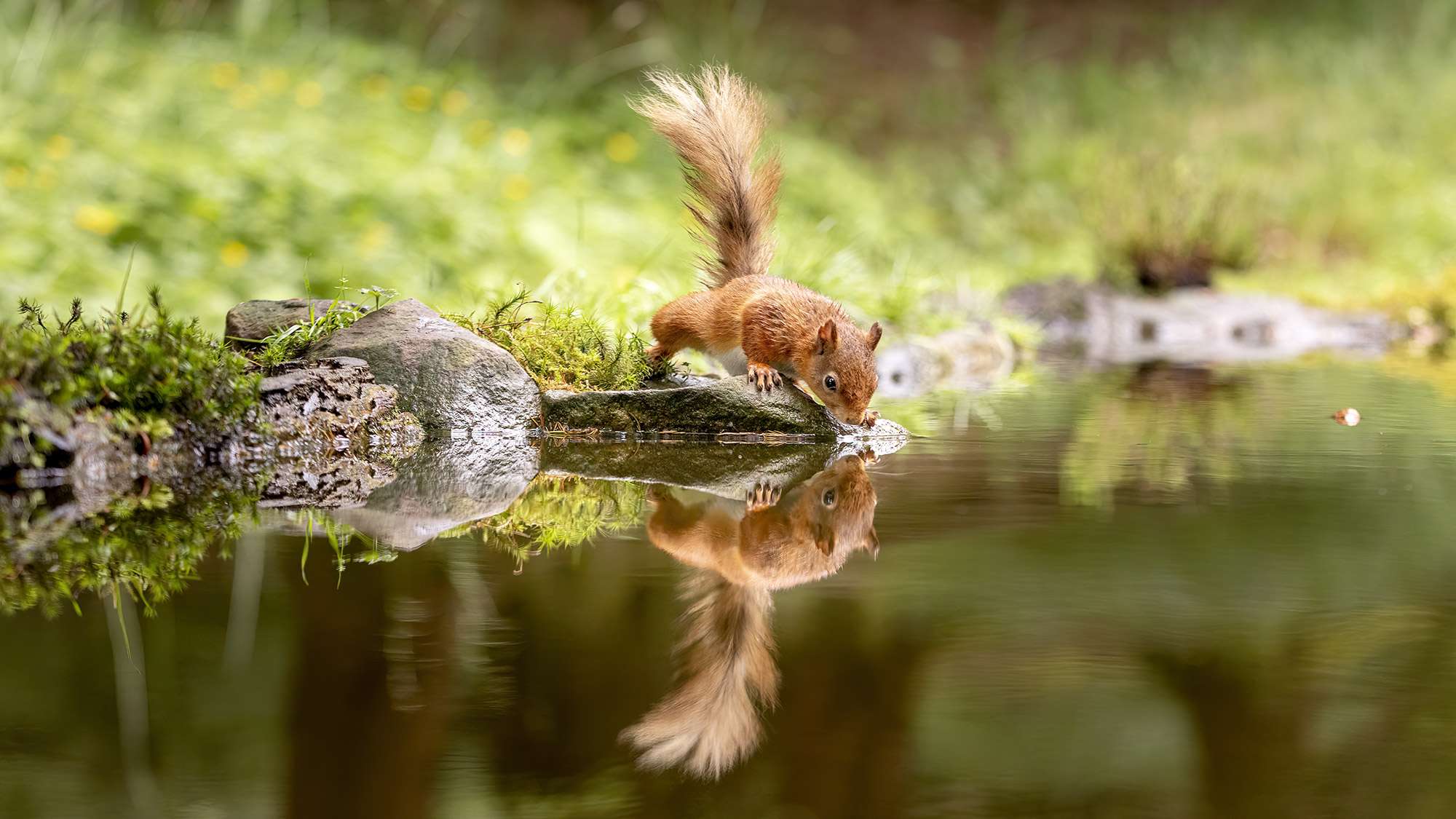How to Photograph Red Squirrels
Red squirrels in the United Kingdom are primarily represented by the native Eurasian red squirrel species (Sciurus vulgaris), which has been present in the UK for approximately 10,000 years. However, they face several challenges due to the introduction and spread of the non-native grey squirrel species (Sciurus carolinensis). The red squirrel population has significantly declined since the 1950s, mainly due to habitat loss and competition with grey squirrels.
Here’s some information about each species:
- Red Squirrel (Sciurus vulgaris): The red squirrel is a native species to the UK and was once widespread throughout the country. However, their numbers have declined significantly due to competition with the introduced grey squirrel, as well as habitat loss. Red squirrels have distinctive red-brown fur with a white belly and are smaller in size compared to the grey squirrel. They are generally found in coniferous and mixed woodlands, preferring areas with a good supply of pine cones and other nuts.
Conservation efforts have been made to protect the red squirrel population, especially in certain regions where they are still relatively abundant, such as Scotland and parts of Northern England.
- Grey Squirrel (Sciurus carolinensis): Grey squirrels are not native to the UK; they were introduced from North America in the late 19th and early 20th centuries. They have adapted well to the British environment and have become widespread across the country. Grey squirrels have greyish fur with a white underside and are larger than red squirrels.
Red squirrels are small mammals with bodies ranging from 20 to 22 cm in length and tails measuring 17 to 18 cm. They weigh between 250-300g and have coats that range from light orange to almost black. Their fur becomes thicker and darker in winter.
Efforts are being made to conserve and protect red squirrels in the UK. Organizations such as The Wildlife Trusts are working to preserve their natural habitat and raise awareness about the importance of these iconic British mammals. There have been some successful initiatives in certain regions, resulting in red squirrel populations making a comeback.
In some areas, especially in Scotland and parts of Northern Ireland, efforts have been made to control the population of grey squirrels to protect the native red squirrels and their habitats.
For more information about red squirrels in the UK, you can refer to the following sources:
- The Wildlife Trusts. “Red squirrels.” Link
- Discover Animals. “Where to see red squirrels in England.” Link
- Countryfile. “Red squirrel guide: how to identify and best places to see in Britain.” Link
- The Christian Science Monitor. “Red squirrels revive in the UK, with help from humans.” Link
>>See all the images from this shoot CLICK <<
How to Photograph Red Squirrels
When photographing from hides, there are a few tips and tricks that can help you capture stunning images. Here are some photography tips for photographing from hides:
- Choose the right hide: Make sure you select a hide that is well-positioned and offers a good view of your subject. Consider the light conditions and the distance from which you can capture good shots.
- Be patient: Wildlife photography requires a great deal of patience. Spend enough time in the hide to allow the animals to become comfortable with your presence. This will help you capture natural and undisturbed behaviour.
- Focus on composition: Composition is the key to captivating photographs. Pay attention to the background and foreground elements in your frame, making sure they add to the overall impact of the image.
- Use the right equipment: Depending on the distance between you and your subject, you may need a telephoto lens to capture close-up shots. Additionally, a sturdy tripod can help keep your camera steady and reduce blur.
- Understand the behaviour of your subject: Learn about the behaviour of the wildlife you are photographing. This will help you anticipate their movements and capture decisive moments.
- Be mindful of light: Lighting is crucial in photography. Choose the right time of day when the light is soft and directional. This will help you create well-lit and appealing images.
- Experiment with different angles and perspectives: Don’t be afraid to try various angles and perspectives to add interest to your photographs. Get down low or shoot from a higher vantage point to change the viewpoint.
- Respect the wildlife: Remember that you are a visitor in the wildlife’s habitat. Always observe ethical guidelines and don’t disturb or harm the animals you are photographing.
- Shoot in RAW format: RAW files capture more information and allow for greater flexibility in post-processing. This will help you enhance your images and make necessary adjustments without losing quality.
- Practice and have fun: The more you practice, the better you will become. Take the time to experiment, learn from your mistakes, and enjoy the process of wildlife photography.
Photographing from hides requires patience and dedication. With practice and these tips in mind, you can capture amazing images of wildlife in their natural habitat.
Remember, the goal of wildlife photography is to capture beautiful and natural moments of animals in their environment while minimizing any negative impact on their well-being. Always prioritize the welfare of wildlife and practice responsible photography techniques.
Happy shooting!
Red Squirrel Fun facts
- Scientific Name: The red squirrel is known as Sciurus vulgaris and belongs to the Sciuridae family.
- Size and Appearance: Red squirrels are small rodents, measuring about 7-9 inches (18-23 cm) in length, with an additional 6-9 inches (15-23 cm) for their bushy tail. They typically weigh around 5.3-7.1 ounces (150-200 grams). As the name suggests, their fur colour is mostly reddish-brown, though it can vary depending on the season and their geographic location.
- Distribution: Red squirrels are native to Eurasia and can be found across a wide range, including parts of Europe and Asia.
- Diet: Their diet mainly consists of seeds, nuts, berries, fungi, and occasionally insects and bird eggs. They have been observed storing food for the winter in various locations called caches.
- Adaptations: Red squirrels have sharp claws and a great sense of balance, which helps them navigate trees with ease. Their long, bushy tails serve as a counterbalance, providing stability while jumping from branch to branch.
- Vocalizations: These squirrels are known for their high-pitched vocalizations, including sharp “chuck” calls and loud chattering sounds used for communication and territorial warnings.
- Caching Behavior: Red squirrels are expert food hoarders. They bury nuts and seeds in the ground or hide them in tree crevices to be consumed during winter when food is scarce.
- Territorial Behavior: Red squirrels are highly territorial and will defend their territories aggressively against intruders. They are also known for their acrobatic displays during territorial disputes.
- The decline in Some Regions: Red squirrels face threats in certain regions due to habitat loss and competition with introduced grey squirrels. In some areas, the red squirrel population has declined, making them a protected species.
- Lifespan: In the wild, red squirrels typically live for 2 to 5 years, but some individuals have been known to live up to 10 years in captivity.
- Arboreal Lifestyle: Red squirrels spend most of their time in trees, constructing leaf nests called dreys in the branches, where they rest and raise their young.
- Seasonal Changes: During colder months, their ear tufts become more prominent, and their fur gets thicker and darker, aiding in insulation against the cold weather.
Red squirrels are fascinating creatures, and their playful behaviours and acrobatics make them a joy to observe in the wild. However, in some regions, they face challenges to their survival, making conservation efforts essential to protect these charming little rodents.
► WORKSHOPS
► ABOUT ME
► MY GEAR
► FACEBOOK
► YOUTUBE
► INSTAGRAM






Tell us about your thoughtsWrite message